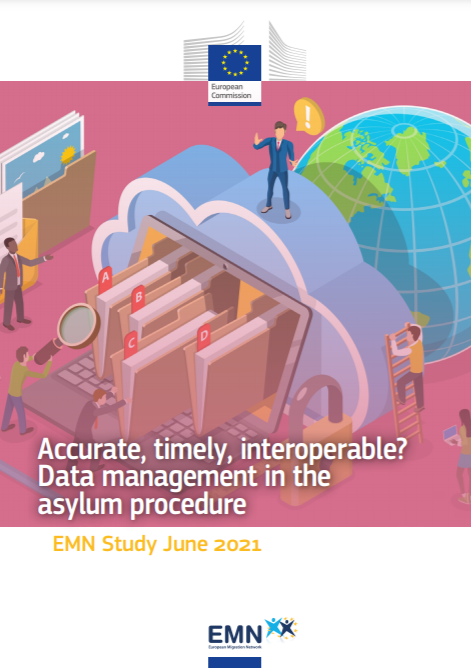This study examines how data are managed in the different phases of the asylum procedure (making, registering, lodging and examining) across the Member States and Norway. It maps data management approaches in the asylum procedure (i.e. data protection and safeguards), examines challenges faced by Member States, and analyses the impact of any procedural changes to enhance data-sharing among asylum authorities (and others).
This study reflects the situation and developments in data management in the asylum procedure between 2014 and 2020, the initial three years of which were characterised by very high numbers of applicants for international protection. The impact of the COVID-19 pandemic on data management in the asylum procedure is also briefly explored. As regards statistics, the period 2014-2019 is covered.
This study refers to the different phases of the asylum procedure, as defined by the European Asylum Support Office (EASO):
- Making an application: the person expresses their intention to apply for international protection (‘making’ phase);
- Registering an application: the applicant’s intention to seek protection is registered, which may be done by an authority not competent for the asylum procedure itself, such as border police (‘registering’ phase);
- Lodging an application: the asylum application is formally lodged with the competent authority for the asylum procedure (‘lodging’ phase);
- Examining the application (‘examining’ phase).
See also;


